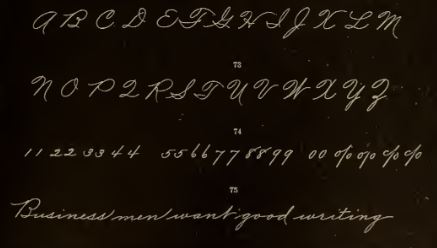Many schools are no longer prioritizing the teaching of cursive penmanship. Yet a century ago, it was a different story. In the days before computers – when even typewriters were something that not everybody had access to – handwriting was of vital importance. The 1912 Course of Study for the Public Schools of Colorado demonstrates the importance of the teaching of penmanship during that era.
The Course of Study book, an early-twentieth-century version of public school academic standards, outlined what was expected to be taught in Colorado’s public schools. The 1912 book devoted several pages to the instruction of penmanship: the ideal positioning for the paper, hand, arm, and whole body; which muscles of the hand and arm should move; the different letter forms; and exactly which materials to employ (“Use pens. Discourage the use of pencils in any writing, and do not permit pupils to use fountain pens of any make. Medium-pointed pens are the best for teaching a free, elastic movement.”) Seventy-four different handwriting exercises were also provided, for teachers to use with their students. The exercises included instructions on how each letter should be made (e.g., Exercise 22 for little o, “Close the top and finish with a retraced compound curve”) and sometimes included instructions on how quickly the characters should be written (students studying capital N should repeat forty-five in one minute).
To see more Course of Study books, visit our library’s Digital Repository.

- How to Spot the Differences Between Eagles and Hawks - August 16, 2021
- How Transportation Projects Help Tell the Story of Colorado’s Past - August 9, 2021
- Time Machine Tuesday: The Night the Castlewood Canyon Dam Gave Way - August 3, 2021
The Penmanship section starts at p. 226 of the printed book (p. 242 of the PDF), in case anyone is looking for it. My wife and I tried to get our daughter interested in learning cursive writing, but she was uninterested.
The Course of Study was quite comprehensive, wasn’t it? It included manual arts, drawing, and music, even “humane education”, which seemed to focus on kindness to animals.